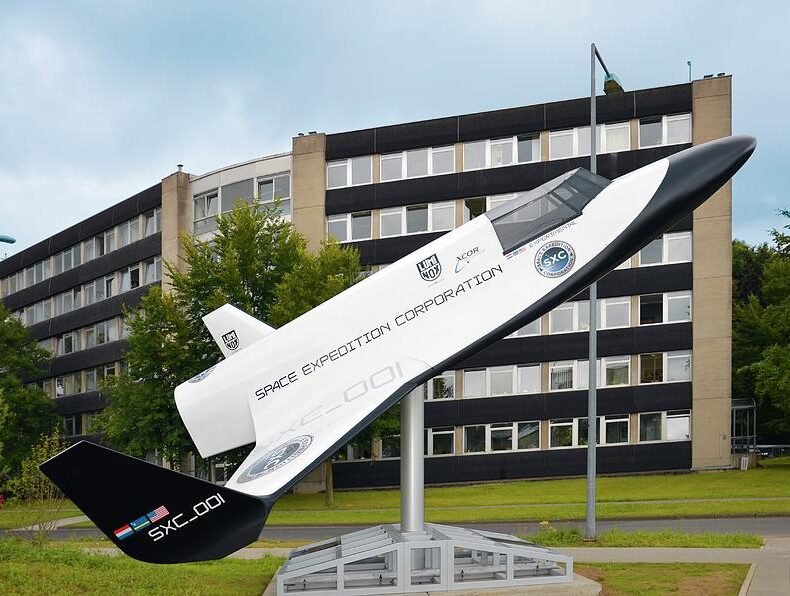Carrier aircraft
The carrier aircraft provides an air launch platform for both services. It takes off and lands on normal runways. Operations and maintenance of both aircraft and space payloads also take place from an airport.
The carrier aircraft takes the payload up to an altitude of 14 km, above regular air traffic, in VFR conditions. There it drops the payload, and flies back to the airport, ready for another flight!
Human flight spacecraft
The Monal Aerospace spacecraft is a suborbital spacecraft, capable of human spaceflight, crossing the Kármán line at 100 km altitude. There is several m3 of payload volume behind the pilot, which can be converted into one or two additional seats for passenger flight.
A single pilot controls the spacecraft. The vehicle is flown manually, without autopilot, but with navigation and guidance displays. Flight controls are manual for the subsonic and transsonic flight regimes, and electric for the supersonic flight regime.
Take-off and landing happen horizontally like an aircraft, and also from a normal aircraft runway at a designated airport or spaceport. The landing gear is retractable. The wing area is sized for landing at moderate touchdown speeds.
Orbital satellite launcher
Nano- and microsatellites can be launched using the orbital launcher. This is a two-stage air-launch-to-orbit system. It uses the carrier aircraft to its advantage for lifting itself above most of Earth’s atmosphere, and to align flight heading with the planned orbit inclination. Both advantages save precious Delta-V.
The second stage will release the satellite in orbit. Shortly after, the stage will make a small de-orbit maneuver and re-enter, to not clutter up space!

